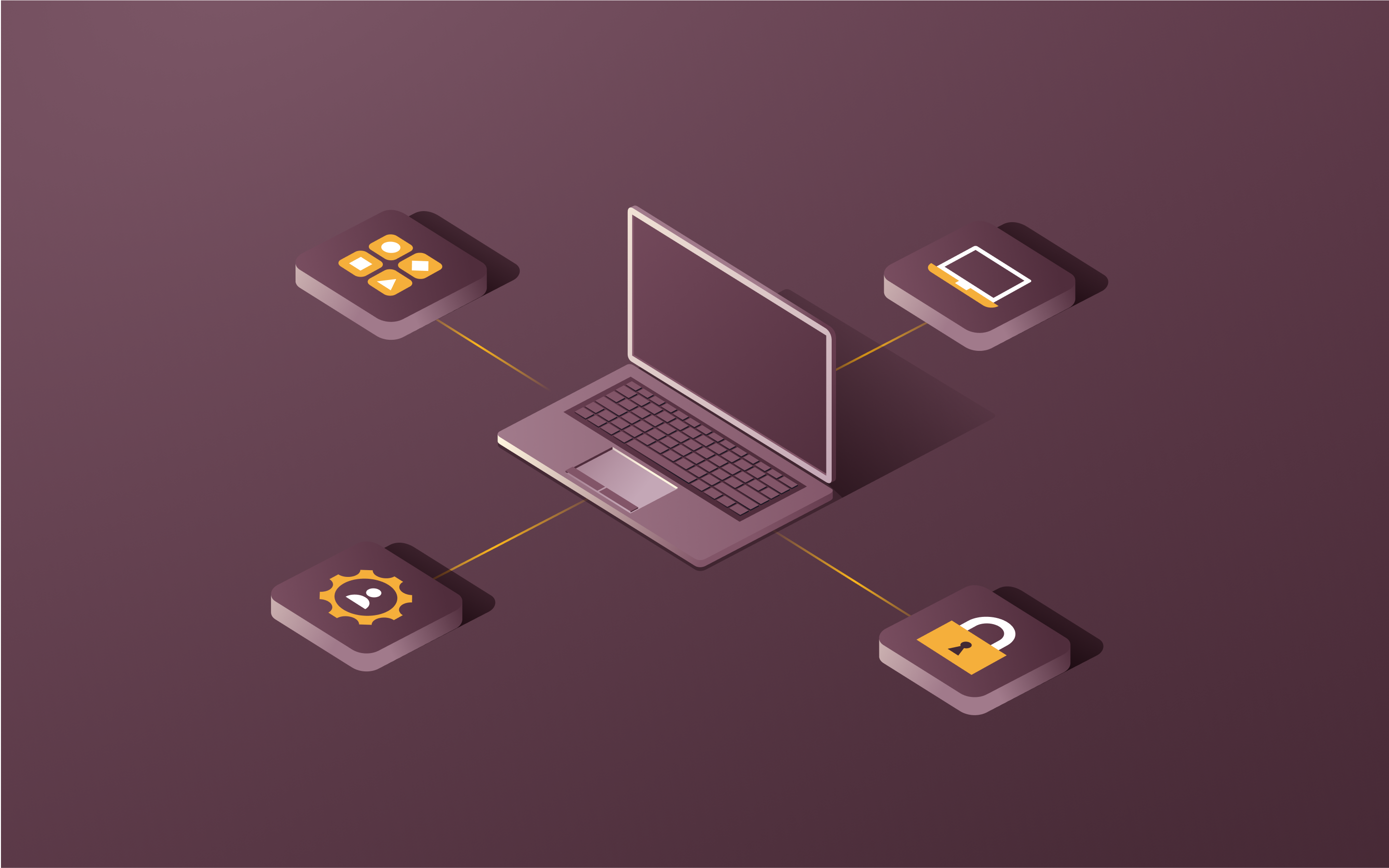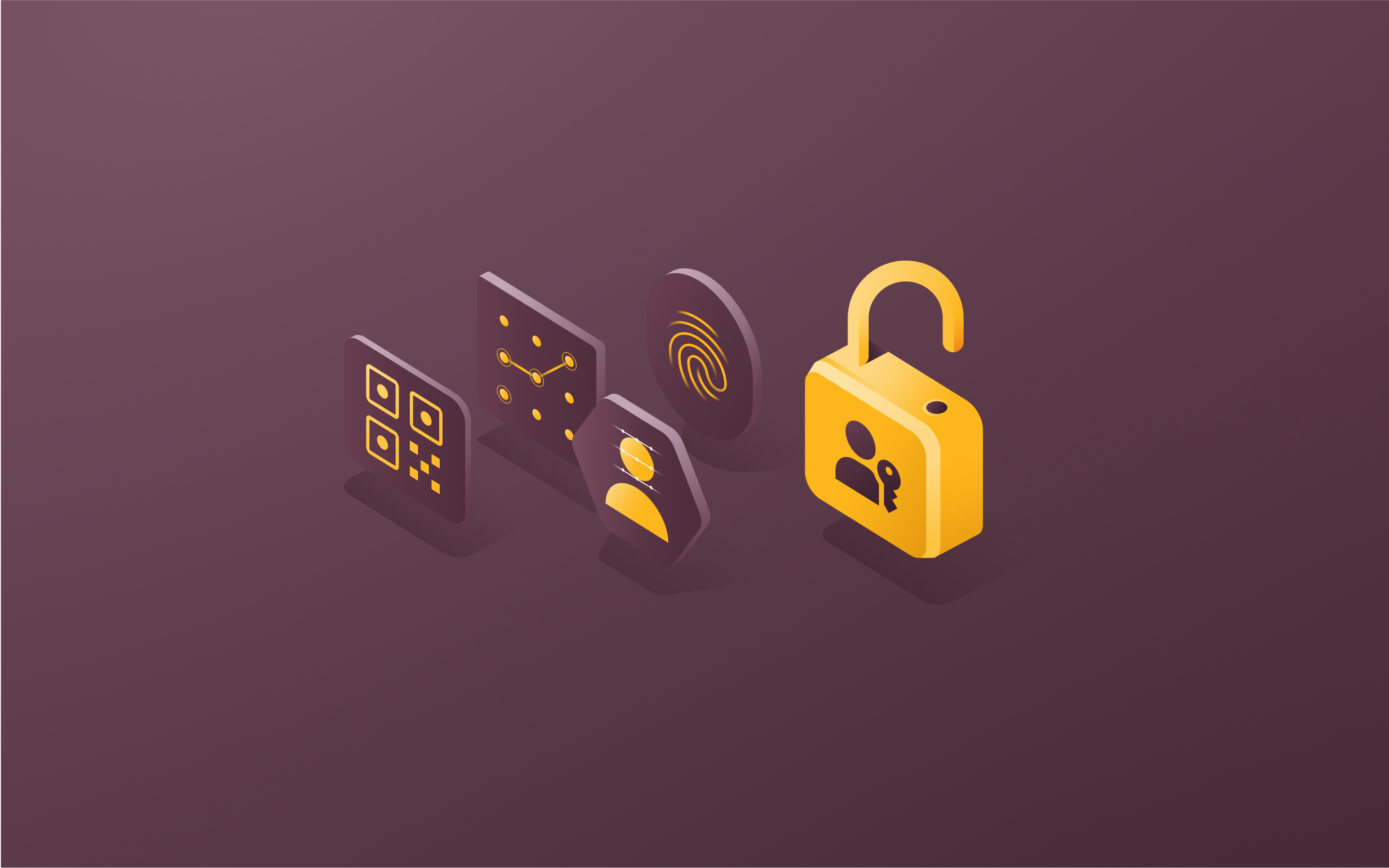Checklist: How to implement zero trust in 6 steps

Key Takeaways
- Zero trust is a security model that assumes no implicit trust and grants access based on continuous verification of identity, device security, and context.
- Implementing zero trust involves defining protected assets, mapping transaction flows, designing network architecture, creating granular access policies, selecting integrated solutions, and continuous monitoring.
- While implementing zero trust can be complex and challenging, it’s essential for securing modern, distributed IT environments and can be made easier with the right approach, best practices, and tools.
As IT environments grow increasingly complex and distributed, traditional perimeter-based security models are no longer sufficient to protect an organization's assets. The proliferation of cloud services, mobile devices, and remote work has made network boundaries more porous and difficult to defend. Additionally, the rise of insider threats and increased sophistication of cyberattacks have further exposed the limitations of traditional security approaches. This is where the zero trust security model comes in.
The main idea behind zero trust is to continuously verify every access request, regardless of whether it originates from inside or outside the network perimeter, mitigating the risk of data breaches and unauthorized access.
While it’s necessary, implementing zero trust is no simple task. It requires a comprehensive approach that involves identity and access management (IAM), device security, network segmentation, and continuous monitoring. In this article, we will walk through the key steps and considerations for implementing zero trust in your organization.
What is zero trust?
Zero trust is a security model that assumes no implicit trust and grants access based on the principle of least privilege. Unlike traditional security models that rely on a trusted internal network protected by a perimeter firewall, zero trust treats all network traffic as untrusted, regardless of its origin.
Here’s a simple analogy: You can think of traditional network security as a house with a big fence around it. Everyone inside the fence is trusted, while everyone outside is not. Zero trust is more like a house where every room has its own lock and you need a special key to enter each one. Just because you made it through the front door doesn't mean you have free rein of the place.
Under a zero trust model, every access request is authenticated, authorized, and encrypted before being granted. The system checks:
- Identity verification: Who are you?
- Device security posture: What device are you using?
- Context like location and time: Where are you connecting from?
Only if everything checks out are you given access, and even then, it's only to the specific resources you need for your job (aka least-privilege access). This "never trust, always verify" approach helps prevent unauthorized access, limit the impact of breaches, and make it harder for attackers to move around your network.
How to implement zero trust? 6 steps
Implementing zero trust is a journey that involves multiple aspects of your IT ecosystem, from identity management to device security to network architecture. Here are the key steps to follow:
1. Define your protected surface
The first step in implementing zero trust is to identify your most critical assets—the data, applications, and services that are essential to your business and would cause significant harm if compromised. This is your protect surface.
Your protect surface will vary depending on your industry and business model. For example, let's say you're a healthcare company. Your protected surface likely includes patient records (regulated data), your billing system (operations), and maybe your telehealth platform (critical app). Defining this upfront helps you prioritize your zero trust efforts and determine what level of controls each resource needs.
It's important to note that your protected surface is not static. As your business evolves and new technologies emerge, your critical assets may change. Therefore, regularly reviewing and updating your protected surface is crucial to maintaining an effective zero trust strategy.
2. Map the transaction flows
Next, you need to understand how your protected assets are accessed and used across your environment. This involves mapping out the data flows and dependencies between users, devices, applications, and networks.
Some key questions to ask:
- Who needs access to the protected assets, and from which devices and locations?
- What are the communication pathways between the assets and other systems?
- Are there any legacy or third-party components that complicate the access patterns?
Understanding these transaction flows is key to designing a zero trust architecture that doesn't break your business processes. Importantly, this mapping should consider not only current flows but also anticipate future ones, accounting for potential changes in business models and technologies. This forward-looking approach ensures your zero trust implementation remains adaptable to evolving needs.
3. Architect your zero trust network
With your protect surface and transaction flows mapped out, you can start designing your zero trust network architecture. The goal is to segment your network into smaller, isolated zones and apply granular access controls and monitoring at each boundary.
Micro-segmentation is a key technique in zero trust architecture. It involves creating secure zones around individual workloads or applications and enforcing access policies at the granular level. This approach contains breaches and hinders lateral movement within networks.
4. Create access policies
With your zero trust architecture in place, the next step is to define the specific access policies that will govern who can access what, under what conditions. These policies should be based on the principle of least privilege—granting only the minimum access required for a user or device to perform its intended function.
Some common attributes to consider in your access policies:
- User identity and role
- Device type, ownership, and security posture
- Location and network context
- Application and data sensitivity
- Risk level and threat intelligence
For example, a policy might state that only corporate-owned devices with up-to-date security controls can access sensitive financial data, and only from approved locations and networks. Your policies should be granular, dynamic, and continuously enforced. They should adapt to changes in user roles, device state, and threat levels without requiring manual intervention. This context-aware approach ensures that access decisions are based not just on static attributes, but also on real-time factors and risk assessments.
5. Select your zero trust solutions
To bring your zero trust architecture and policies to life, you'll need a suite of integrated security tools and platforms. The specific components will vary based on your environment and requirements, but some key capabilities to look for include:
- IAM to authenticate users and enforce risk-based access policies
- Unified endpoint management (UEM) to discover, monitor, and secure end-user devices
- Micro-segmentation and software-defined perimeter (SDP) tools to isolate workloads and enforce network-level access controls
- Cloud access security brokers (CASBs) to enforce policies on SaaS and IaaS resources
- Data loss prevention (DLP) and encryption to protect sensitive information
- Security information and event management (SIEM) and user and entity behavior analytics (UEBA) to detect and respond to threats
When evaluating zero trust solutions, prioritize those that offer integrated workflows and centralized policy management across identity, device, network, and data domains. Look for solutions with robust API integrations to enhance flexibility and interoperability. A fragmented approach with siloed tools will undermine the effectiveness of your zero trust implementation.
6. Monitor and maintain
Implementing zero trust is not a one-time event, but an ongoing process of monitoring, measuring, and adapting to changes in your environment and threat landscape. Continuous visibility and real-time risk assessment are essential for maintaining a strong zero trust posture.
Some key activities to perform on an ongoing basis:
- Monitor user and device activity for anomalous behaviors that could indicate compromise.
- Assess device security posture and compliance with policies, and automate remediation actions.
- Update your policies and controls as new threats, technologies, and business requirements emerge.
- Integrate and leverage threat intelligence to proactively identify and respond to emerging risks.
4 challenges of implementing zero trust
While the benefits of zero trust are clear, implementing it in practice comes with its share of challenges:
IAM complexity
Zero trust relies heavily on strong IAM capabilities to authenticate users and enforce granular access policies. However, many organizations struggle with complex, fragmented IAM environments that span multiple platforms, protocols, and vendor solutions.
Implementing zero trust often requires modernizing and consolidating IAM systems to support features like single sign-on (SSO), multi-factor authentication (MFA), and risk-based access policies. This can be a significant undertaking, especially for large, distributed organizations.
Device diversity
Another key challenge in zero trust is managing the diversity of end-user devices, including both corporate-owned and personally-owned (BYOD) devices. With the rise of remote work and mobile computing, it's becoming increasingly difficult to maintain visibility and control over all the devices accessing corporate resources.
To enable zero trust, organizations need to be able to discover, classify, and assess the security posture of all devices, regardless of ownership or location. This requires advanced device management and security controls that can handle the full spectrum of device types and platforms. Endpoint detection and response (EDR) solutions can play an important role here, providing real-time monitoring and threat detection across diverse device environments.
Legacy systems operation
Integrating legacy systems into a zero trust architecture presents a significant challenge for many organizations. These older systems often lack modern security features and may not support the fine-grained access controls required for zero trust.
Retrofitting legacy applications and infrastructure to work within a zero trust model can be complex and time-consuming. Organizations may need to implement additional security layers, such as application proxies or API gateways, to extend zero trust principles to legacy systems without modifying the systems themselves. As part of a long-term strategy, some organizations might consider gradually phasing out legacy systems in favor of more zero trust-compatible alternatives.
User experience
Security is often at odds with user productivity and convenience. The stricter the access controls and device requirements, the more hoops users have to jump through to get work done. This creates friction and affects their productivity.
Organizations need to design policies and workflows that provide strong security without unduly burdening users. This may involve implementing SSO, context-aware authentication, and self-service access request processes to streamline the user experience. Leveraging the right tools and incorporating user feedback can further improve this balance between security and usability.
Zero trust solutions checklist
When evaluating zero trust solutions, look for the following key capabilities:
Unified visibility
You can't secure what you can't see. Look for tools that give you a centralized view of users, devices, applications, and network traffic across your entire environment–on-prem, cloud, and remote. Bonus points for a solution that can stitch together identity and device context to give you a full picture of risk. For example, being able to see that a user is accessing a sensitive app from an unmanaged device on an untrusted network.
Device trust integration
An effective zero trust solution should be able to assess and monitor the security posture of devices accessing your network. This includes both company-owned and personal devices. Look for features like device health checks, which can verify if a device has up-to-date software, antivirus protection, and required security configurations. The ability to integrate with existing endpoint management tools and enforce access policies based on device trust levels is crucial.
Ease of deployment and management
While security is paramount, the solution should also be practical to implement and maintain. Look for providers that offer flexible deployment options, whether on-premises, in the cloud, or in hybrid environments. User-friendly management interfaces, automated policy enforcement, and self-service capabilities can significantly reduce the operational burden on IT teams.
Continuous monitoring capabilities
Opt for a solution that provides ongoing surveillance of network activity. It should track user actions, data transfers, and access attempts across your systems. Advanced solutions use intelligent analysis to identify unusual patterns that might indicate security threats. The ability to generate alerts or even automatically cut off access when suspicious activity is detected can be a powerful security feature.
Zero trust best practices
Implementing zero trust successfully requires more than just technology—it also involves people, processes, and policies. Here are some best practices to keep in mind:
Align with business objectives
Zero trust isn't just a security thing—it's a business enabler. Engage with business stakeholders early and often to understand their goals, initiatives, and pain points. Position zero trust as a way to support those goals by enabling secure access to resources from anywhere. But also be upfront about the changes and trade-offs it will require. Work together to design policies that balance security and productivity. Foster cross-departmental collaboration to ensure that security measures effectively support various business functions across the organization.
Start small and iterate
Implementing zero trust across an entire organization can be a daunting task. Start with a small, well-defined use case or pilot project to validate your approach and build momentum. Then iterate and expand gradually based on lessons learned.
Educate and communicate
Zero trust involves a significant cultural shift for many organizations. Educate users and stakeholders on the benefits and implications of zero trust, and communicate regularly about progress, challenges, and successes. Provide training and support to help users adapt to new policies and workflows.
Leverage automation
Automation is key to scaling zero trust across a large, complex environment. Use tools and workflows to automate tasks such as device enrollment, policy enforcement, and incident response. This will help ensure consistency and reduce the burden on security teams.
Rippling: Easy zero trust implementation for your business
Implementing zero trust can be a complex and time-consuming process, especially for organizations with limited security resources and expertise. Rippling offers a streamlined solution to this challenge.
Rippling is an integrated workforce platform that unifies identity, device, and access management in a single, easy-to-use solution. With Rippling, you can:
- Centrally manage user identities and access policies across all your applications and services
- Automatically provision and deprovision user accounts based on HR changes
- Enforce device security policies and remotely wipe data from lost or stolen devices
- Establish and maintain device trust through continuous monitoring and assessment
- Monitor user activity and detect potential security threats in real-time
Rippling essentially streamlines the implementation of zero trust and helps you achieve a strong security posture with less complexity and overhead.
Frequently asked questions
Is zero trust difficult to implement?
Implementing zero trust can be a complex task, particularly for organizations with intricate, older IT systems. It requires substantial investment in new technologies, process changes, and skill development. You might need to shake up existing workflows and change how your team operates.
However, the level of difficulty varies based on your current setup and how far you want to go with zero trust. You can make the process more manageable by starting small, making use of tools you already have, and partnering with experienced providers. This approach allows you to make steady progress and see the benefits of zero trust gradually, rather than trying to overhaul everything at once.
What is the disadvantage of zero trust?
One of the main downsides of zero trust is the substantial upfront investment it requires. You'll need to dedicate time, money, and effort to make it work. It's not a small project—you'll need buy-in from across the organization, budget for new tools, and a good deal of hard work to bring it all together. There's also the risk of going overboard in your drive for security and putting up too many barriers. If you make it too difficult for users to do their jobs, they might start looking for workarounds, which could undermine your carefully designed security measures. However, many organizations find that the long-term benefits in risk reduction and compliance outweigh these initial costs and potential friction.
What is a real-life example of zero trust?
Let's say an employee wants to access a sensitive financial application from their personal laptop while working remotely. In a traditional security model, they might be granted access based solely on their username and password, regardless of the device they're using or where they're connecting from.
In a zero trust model, the access request would be evaluated based on multiple factors, such as:
- Is the user authenticated and authorized to access the application?
- Is the device managed by the company and running up-to-date security software?
- Is the device connecting from a trusted network or location?
- Does the user's behavior match their typical access patterns?
Only if all these conditions are met would the access request be granted, and even then, it would be limited to the specific privileges needed for the user's role. If any of the conditions are not met, the request would be denied or additional authentication steps would be required.
Schedule a demo with Rippling IT today
This blog is based on information available to Rippling as of August 26, 2024.
Disclaimer: Rippling and its affiliates do not provide tax, accounting, or legal advice. This material has been prepared for informational purposes only, and is not intended to provide or be relied on for tax, accounting, or legal advice. You should consult your own tax, accounting, and legal advisors before engaging in any related activities or transactions.








